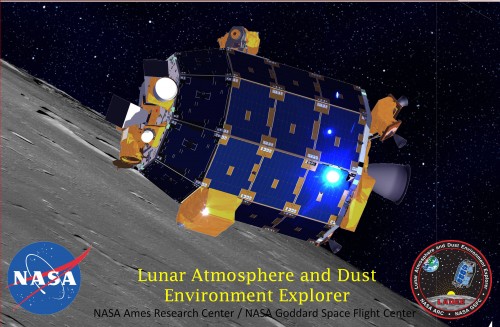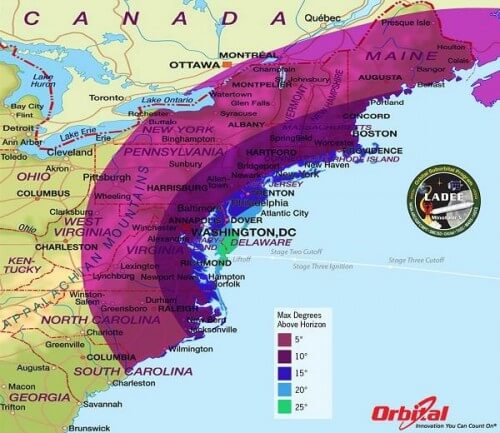An American spacecraft sets out to investigate dust and gases in a brick * Millions on the East Coast are invited to watch the fire that will shine in the night sky between Friday and Saturday

Update, September 7. The launch was carried out successfully - See a special report by a Universe Today reporter who was present at the launch (Hebrew, on the science website)
The news as published on September 6
Editor's note: According to the "Universe Today" website The launch from Wallop Island on the coast of Virginia is of interest because it is the first launch into space (Except for a failure to launch an unmanned missile in the early sixties) in close proximity to an area where tens of millions of residents live. The trail left by the launch rocket will shine in the night sky, and will be visible in the nearer areas up to a height of 20 degrees above the horizon. For the convenience of our surfers on the East Coast, the scheduled launch time is 23:27 PM on Friday night. According to Israel time, the time will then be 06:27 in the morning on Saturday) A.B.
* * *
When the astronauts of the "Apollo" spacecraft walked on the moon, more than 40 years ago, they noticed an unexpected phenomenon: a strange glow that appeared above the white horizon, shortly before sunrise. On Earth there is nothing special about such a phenomenon, but unlike here, the Moon does not have an atmosphere that can refract the light rays and create such a glow. So what causes the strange phenomenon? Scientists have not yet been able to solve the mystery. The obvious explanation is that the light is refracted due to dust particles drifting over the surface, but in the absence of winds on the moon, there is also no logical reason for such dust drifts. One explanation is that an electric charge lifts the dust particles into the air, but so far it has no scientific confirmation. In an attempt to unravel the mystery, NASA launches the spacecraft known as "Lady" to the moon - an unmanned spacecraft that will circle at a low altitude around the brick to study the immediate environment above the surface of the moon.
lady with laser

"Lady" (LADEE) are English acronyms for Lunar Atmosphere and Dust Environment Explorer - a spacecraft for studying the atmospheric environment and dust on the moon. It is supposed to fly at an altitude of 20-30 km above the surface of the moon, and investigate, among other things, the composition and physical properties of the dust particles. The spacecraft will also use sophisticated instruments to study the very thin layer of gases around the moon. As mentioned, this layer is too small to be called "atmosphere" (some call it "exosphere"), but its understanding is of great importance to the study of the moon. Moreover, the studies in both fields - both the composition of the gases and the dust - are important for understanding various phenomena not only on the moon, but on other planetary bodies, which man may want to settle on one day. The spacecraft - in which NASA invested about 280 million dollars, will also test for the first time a new communication system, based on a laser instead of radio waves. Such a system - which is already used in various infrastructures on Earth - should be much faster than radio waves, and above all - consume much less electricity.
Invest in recycling
"Lady" will make her way to the moon lazily, and the journey there will last about a month. One of the reasons is a relatively small launch missile (25 m high). This missile is nothing but a recycling of intercontinental ballistic missiles, given a completely new use. The launch rocket "Minotaur 5" - which will be its first flight - consists of parts of three such rockets, plus boosters that did not exist in the original rockets. This is also the reason that NASA does not launch the spacecraft from the space center in Florida, but from Wallops Island, off the coast of Virginia - one of the only sites from which it is allowed to launch intercontinental ballistic missiles, according to the arms control agreements with Russia. About a month after the launch, "Lady" is supposed to enter orbit around the moon, and then gradually descend for another month, until the scientific work begins. At the end, in about six months, the spacecraft will crash into the surface of the moon in a planned manner, and even after that the researchers hope to continue collecting more information from its scientific instruments.
